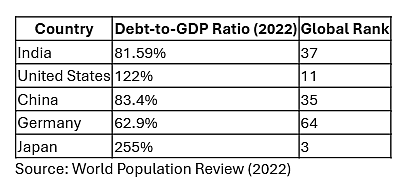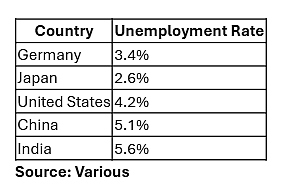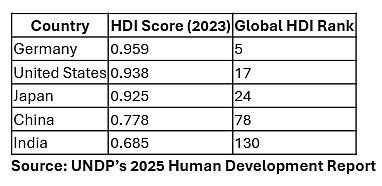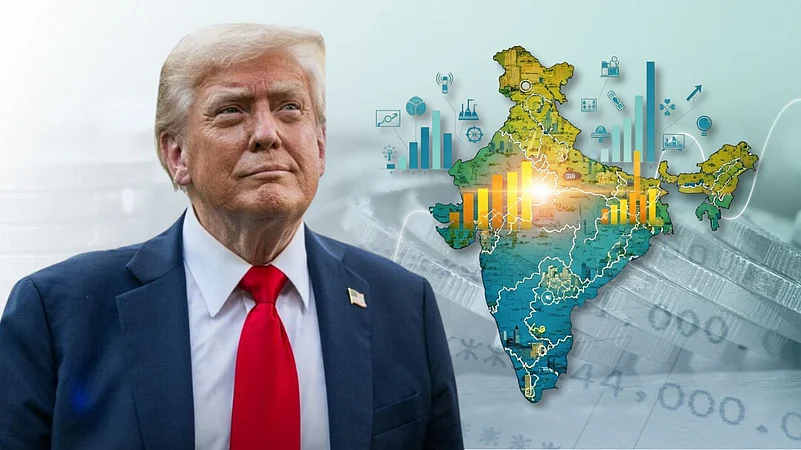"I don't care what India does with Russia. They can take their dead economies down together, for all I care." That is what US President Donald Trump said after announcing a 25 per cent tariff on goods imported from India, plus a "penalty" for buying oil and weapons from Russia. Trump's remark quickly drew sharp reactions from economists, politicians and the general public on the internet.
Leader of Opposition of Lok Sabha Rahul Gandhi took to X (formerly Twitter) to opine: "The Indian economy is dead. Modi killed it." He blamed the alleged Adani-Modi partnership, demonetisation, and a flawed GST for damaging businesses. He said the "Assemble in India" initiative failed, MSMEs were wiped out, and farmers were crushed. According to him, Modi has destroyed the future of India's youth as there are no jobs left.
Union Minister of Commerce & Industry Piyush Goyal countered these claims, saying India had transformed from being one of the 'fragile five' to the fastest-growing major economy in the world in just over a decade.
"We have risen from the 11th largest economy to one of the top five… It is also widely expected that we will become the third-largest economy in a few years. Today, international institutions and economists see India as the bright spot in the global economy. India is contributing to almost 16 per cent of the global growth," the Union Minister said in a statement to Parliament.
But what does it really mean to call an economy "dead"? And does India fit that description? Let's look at what the numbers say.
What is a "Dead Economy"?
There's no textbook definition for the term, but it is generally used to describe a country trapped in a prolonged economic slump. This could ideally mean GDP keeps shrinking quarter after quarter, new investments stop coming in, unemployment rises, productivity flatlines, and investors lose confidence in the market.
Based on those metrics, is India really a dead economy? Let us look at what the facts say.
GDP Growth Rate
India is currently the world's fastest growing major economy, according to International Monetary Fund (IMF). India's gross domestic product (GDP) is projected to grow at 6.4 per cent in 2025, as per IMF's estimates. The growth rate was 6.5 per cent in 2024. The Reserve bank of India (RBI) estimates India's economy to grow at 6.5 per cent in fiscal year FY26.
That's more than three times faster than the US, the world's largest economy, which the IMF sees expanding by 1.9 per cent in 2025.
India at present sits at the fourth place among the world's largest economies, after the US, China, and Germany. At the fifth place is Japan.

Debt-to-GDP Ratio
The debt-to-GDP ratio compares a country’s total government debt to the total value of goods and services the country produces, or, simply, GDP.
Economies with a low debt-to-GDP ratio generally suggests that a country is in a stronger position to manage and repay its debt. Though a low debt-to-GDP ratio does not necessarily indicate a healthy economy.

GDP Per Capita
GDP per capita shows the average economic output per person in a country. A high figure indicates higher incomes and better living standards, while a low figure suggests lower incomes, fewer resources, and a lower standard of living.

Unemployment Rate
The unemployment rate measures the share of people in a country’s workforce who are out of work but actively seeking jobs. A high unemployment rate often signals a struggling economy where businesses are not hiring enough, leaving many without income or stability. It essentially reflects stress in the labour market of a country.

Human Development Index
The Human Development Index (HDI) measures a country’s overall quality of life based on life expectancy, education levels, and income per person. A high HDI indicates that people generally live longer, are better educated, and enjoy higher living standards.

The Conclusion
India does have its share of problems like unemployment, lower per capita income, and gaps in education and living standards. However, calling it a “dead economy” is far from reality. The numbers tell a different story. India is still among the fastest-growing major economies, with a strong growth rate and a debt level it can manage compared to many others.










